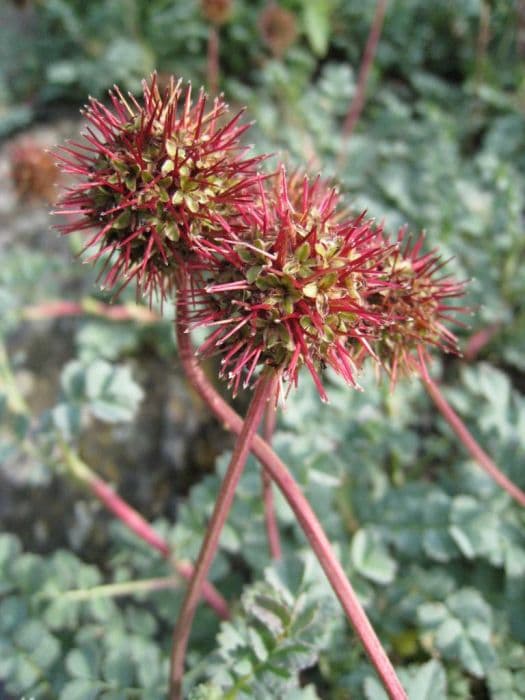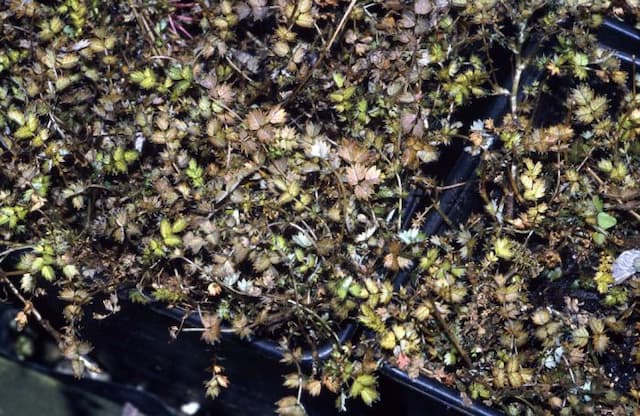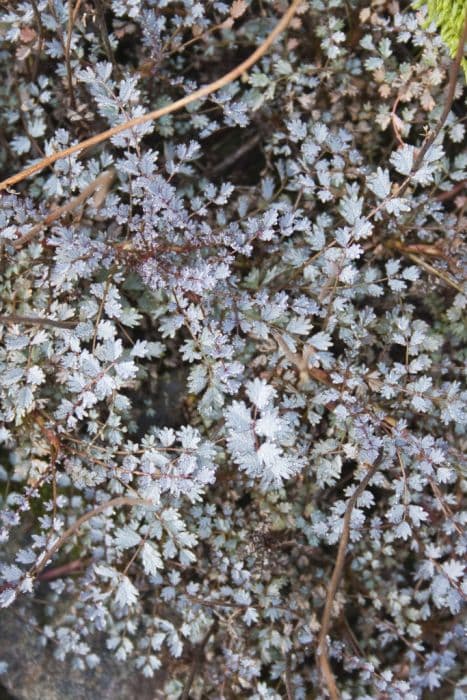Penny Lane Rose Rosa Penny Lane = 'Hardwell' (PBR) (ClHT)
![rose [Penny Lane]](/_next/image?url=https%3A%2F%2Fplants-admin.emdemapps.com%2Fimages%2Fplants%2F%2Fimages%2F604b537a889c2.png&w=3840&q=75)
ABOUT
The Rosa Penny Lane, commonly known as a climbing rose, features an exquisite blend of colors and textures that make it a striking addition to any garden or wall it adorns. Its flowers are a soft, creamy apricot hue that gently fades to a lighter shade toward the edges. These blooms are large, full, and have a classic, old-fashioned look with a high center and multiple layers of ruffled petals, offering a romantic visual appeal. The blossoms emit a delightful fragrance that has been described as moderate to strong. This aroma is a sweet and pleasing mix, reminiscent of traditional rose scents with possible fruity or honey-like undertones. The contrast between the warm tones of the flowers and the glossy green foliage adds to the plant's charm. The leaves provide a lush backdrop for the blooms, enhancing the overall look of the plant throughout its flowering season. As a climbing rose, this variety is known for its long, arching canes which support the weight of the blossoms. The canes bear numerous thorns, which are typical of rose plants, giving it a protective and hardy appearance. The captivating beauty of the Rosa Penny Lane lasts throughout its extended blooming period, which typically spans from late spring until frost, offering a lasting display of color and elegance.
About this plant
 Names
NamesFamily
Rosaceae
Synonyms
Penny Lane Rose
Common names
Rosa 'Hardwell'.
 Toxicity
ToxicityTo humans
Roses, including the cultivar Rosa 'Penny Lane', are generally considered non-toxic to humans. They do not typically pose a risk if touched or ingested in small quantities. However, the plant can cause minor issues if consumed. For example, the thorns might cause physical injury if one tries to eat the plant without proper preparation. Additionally, some individuals may experience mild stomach upset if they consume rose petals, leaves, or hips because of the plant materials' texture and compounds. But there are no significant toxins in roses that lead to poisoning in humans.
To pets
Roses, specifically Rosa 'Penny Lane', are also generally non-toxic to pets. Cats and dogs may sometimes chew on the petals or leaves without severe risk of poisoning. However, as with humans, the thorns can cause physical injury to pets. There is a risk of minor gastrointestinal upset, such as vomiting or diarrhea, if a pet ingests a large portion of the plant. But roses are not known to contain substances that are highly toxic to pets.
 Characteristics
CharacteristicsLife cycle
Perennials
Foliage type
Deciduous
Color of leaves
Green
Flower color
Apricot
Height
6-8 feet [1.8-2.4 meters]
Spread
4 feet [1.2 meters]
Plant type
Climber
Hardiness zones
5
Native area
Cultivar
Benefits
 General Benefits
General Benefits- Aesthetic Appeal: The Rosa Penny Lane, being a climbing rose, offers a visually appealing feature with its large, full flowers that can enhance the beauty of walls, trellises, and arches.
- Fragrance: This rose variety is known for its delightful fragrance which can enrich the sensory experience of a garden or outdoor space.
- Long Blooming Season: Rosa Penny Lane often has a long flowering period, providing a continuous display of blooms through the growing season.
- Versatility: Climbing roses like the Penny Lane can be used in a variety of garden designs, including formal or cottage gardens.
- Wildlife Attraction: The flowers can attract beneficial pollinators such as bees, butterflies, and birds, which are essential for the pollination of plants and the health of the ecosystem.
- Durability: Rosa Penny Lane is bred for resistance to common rose diseases, offering a more robust choice for gardeners looking to minimize maintenance.
 Medical Properties
Medical PropertiesThis plant is not used for medical purposes.
 Air-purifying Qualities
Air-purifying QualitiesThis plant is not specifically known for air purifying qualities.
 Other Uses
Other Uses- Crafting Potpourri - Penny Lane rose petals can be dried and mixed with other dried plants and essential oils to create a fragrant potpourri.
- Natural Fabric Dying - The petals of Penny Lane roses can be used to naturally dye fabrics to a soft pink hue.
- Floral Water Making - Penny Lane roses can be steeped in distilled water to make rosewater, which is often used in cooking or as a fragrance.
- Gourmet Cuisine - The petals of the Penny Lane rose can be candied or used fresh as an elegant edible decoration on cakes and desserts.
- Homemade Perfume - The strong scent of Penny Lane roses makes them suitable for creating natural, homemade perfumes.
- Art Supplies - The petals can be pressed and used in artistic creations such as botanical prints or in resin jewelry.
- Culinary Garnish - Fresh Penny Lane roses can be used to garnish dishes or freeze them in ice cubes for a decorative touch in beverages.
- Eco-Friendly Confetti - Dried Penny Lane rose petals can serve as biodegradable confetti for weddings and celebrations.
- Floral Bath Soaks - Penny Lane rose petals can be added to bath bombs or salts, infusing the water with their fragrance and providing a luxurious bathing experience.
- Stationery Decoration - Pressed Penny Lane rose petals can be used to embellish handmade paper or cards for a unique touch.
Interesting Facts
 Feng Shui
Feng ShuiThe climbing rose is not commonly used in Feng Shui practice.
 Zodiac Sign Compitability
Zodiac Sign CompitabilityThe climbing rose is not used in astrology practice.
 Plant Symbolism
Plant Symbolism- Love: Roses are universally recognized as a symbol of love, and the Penny Lane variety with its delicate, creamy flowers, conveys a gentle and sophisticated affection.
- Beauty: With its beautiful blooms and elegant appearance, the Penny Lane rose represents the universal appreciation of beauty in all its forms.
- Honor: Roses often signify honor and reverence, making the Penny Lane rose a fitting tribute to someone who is deeply respected.
- Devotion: The enduring nature of rose blooms, particularly those of climbing varieties like Penny Lane, symbolizes deep devotion and commitment.
- Secrets and Privacy: The closed buds of roses can represent secrets or confidentiality, and Penny Lane roses could symbolize the trust in keeping something private or shared only between intimate companions.
- New Beginnings: A rose like Penny Lane can signify new beginnings or the start of a journey, as roses are often given to mark important life events and milestones.
- Balance: The symmetry and form of rose blooms provide a visual representation of balance and harmony, making the Penny Lane rose an emblem of equilibrium and steadiness in life.
 Water
WaterThe Penny Lane Climbing Rose should be watered deeply once a week, providing about 1 to 1.5 gallons of water per plant. During hot, dry periods, increase watering frequency to twice a week. It's important to water the plant at its base to keep the foliage dry and prevent fungal diseases. Ensure the soil is well-draining to avoid waterlogging, and during winter, reduce watering as the plant requires less moisture. Always check the top few inches of soil for dryness before watering again to avoid overwatering.
 Light
LightThe Penny Lane Climbing Rose thrives in full sunlight, which means it should receive at least 6 to 8 hours of direct sunlight daily. The best spot for this rose would be in an area that is sheltered from strong winds but has unobstructed exposure to sunlight. Avoid planting in areas with heavy shade, as this can hamper its growth and flower production.
 Temperature
TemperatureThe Penny Lane Climbing Rose performs best in temperatures between 65 and 75 degrees Fahrenheit. It can survive minimum temperatures down to around 20 degrees Fahrenheit, but frost can cause damage, so providing protection during cold snaps is advisable. During the growing season, maintaining an ideal temperature range will promote healthy growth and flowering.
 Pruning
PruningPruning the Penny Lane Climbing Rose helps maintain its shape, encourages new growth, and improves airflow, reducing the risk of diseases. Prune in late winter or early spring before new growth starts. Remove dead, damaged, or diseased wood, and thin crowded areas by cutting back about a third of the oldest canes. Immediately after flowering, light pruning can be done to shape the plant and remove spent blooms.
 Cleaning
CleaningNot needed
 Soil
SoilThe Penny Lane climbing rose prefers well-draining loamy soil rich in organic matter. A good soil mix could be equal parts garden soil, compost, and perlite or coarse sand to ensure drainage. The soil pH should be moderately acidic to neutral, around 6.0 to 7.0 for optimal growth.
 Repotting
RepottingClimbing roses like the Penny Lane typically do not need to be repotted often since they are usually planted directly in the ground. However, if grown in containers, they should be repotted every 2 to 3 years or when the pot is outgrown.
 Humidity & Misting
Humidity & MistingThe Penny Lane climbing rose tolerates a wide range of humidity levels. However, it thrives best in an environment with moderate humidity. Avoiding excessively high humidity is crucial to prevent fungal diseases, which roses can be prone to.
 Suitable locations
Suitable locationsIndoor
Ensure bright light, adequate airflow, and room to climb.
Outdoor
Full sun, well-draining soil, and support for climbing.
Hardiness zone
5-9 USDA
 Life cycle
Life cycleThe Penny Lane Rose, which is the common name for Rosa 'Hardwell', begins its life cycle with seed germination, though commercially, it is more often propagated from cuttings to preserve its characteristics. After germination or root development from cuttings, it enters into a vegetative growth phase, characterized by the development of foliage and roots. As it matures, it enters the flowering stage, where it produces its distinctive blooms, usually in late spring to summer, but it may continue to flower intermittently until fall. Once pollinated, the flowers can develop into hips (fruit), which contain seeds for the next generation, completing the reproductive cycle. Through the autumn, the plant begins to go dormant, conserving energy and preparing for the winter. In early spring, the rose plant will break dormancy, resuming growth from its established root system and repeating the annual cycle.
 Propogation
PropogationPropogation time
Spring to Summer
Propogation: The Rosa Penny Lane, commonly known as the climbing rose, is most frequently propagated through semi-hardwood cuttings. This technique typically takes place in late summer or early fall, when the stems are mature enough yet still flexible. To propagate, a cutting of about 6 to 8 inches (15 to 20 centimeters) is taken from a healthy, disease-free mother plant; ideally, the cutting should have several sets of leaves. The lower leaves are removed, and the cut end is dipped in rooting hormone to encourage root development. The prepared cutting is then planted in a moist, well-draining growing medium and kept under high humidity with indirect light. Roots usually develop within a few weeks, and once established, the new plant can be gradually acclimated to outdoor conditions before being planted in its permanent location.









